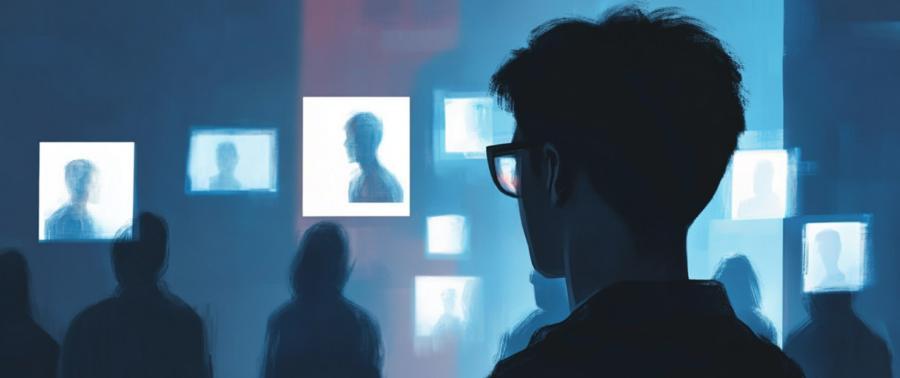AI: The Sherlock Holmes of the Digital Age
Artificial intelligence has become the go-to detective for finding elusive beneficiaries. By analyzing vast data sets, AI tools can predict patterns, uncover connections, and unearth the breadcrumbs people unintentionally leave behind.Take, for instance, a case in New York where an unclaimed estate worth millions had no obvious heirs. AI algorithms combed through public records, social media, and even obituaries to piece together a family tree. The result? A distant cousin in Nebraska who, until that moment, thought her family fortune consisted of nothing more than a collection of antique spoons.
The beauty of AI isn’t just in its speed; it’s in its accuracy. By removing human bias and error, it can connect dots that even the sharpest human eye might miss. It’s not perfect, of course—sometimes it still recommends a random dog as a “potential heir”—but it’s miles ahead of old-school methods.
Blockchain: The Fort Knox of Records
Blockchain, the technology best known for making cryptocurrencies possible, is quietly revolutionizing beneficiary tracing. With its immutable and transparent ledger system, blockchain ensures that critical data—like wills, asset records, and even proof of identity—can’t be tampered with.Imagine a scenario where a disputed will was uploaded to a blockchain. Instead of weeks of legal wrangling, a few clicks would confirm its authenticity and clarify who’s entitled to what. In one case in Europe, a blockchain-based system helped resolve a decades-old dispute over a property inheritance in less than a week. No secret vaults of documents, no expensive lawyers—just a simple digital ledger doing its job.
Digital Forensics: Because the Internet Never Forgets
Digital forensics tools have brought a new level of precision to beneficiary searches. Every email, transaction, or digital account leaves a trace, and forensic experts are increasingly adept at piecing together these digital crumbs.A memorable case involved a philanthropist who passed away without leaving a clear beneficiary for her trust fund. Investigators used digital forensics to retrieve old email drafts, notes saved on her cloud account, and even metadata from photos to identify the intended recipient: a childhood friend she had lost touch with. It was the kind of modern-day sleuthing that would make Agatha Christie do a double take.
Facial Recognition: Putting a Face to the Name
Facial recognition software has also entered the game, and it’s proving to be surprisingly effective. With millions of images uploaded daily to social media and other platforms, matching faces has become less about sci-fi and more about pressing “Enter.”In one striking case, a charity in Asia used facial recognition to locate the family of an elderly man who had lost his memory and couldn’t provide any details about his past. A photo of him was compared against a national database, and within hours, his grandchildren were notified. They showed up, teary-eyed, to reunite with him after years of searching. Cue the heartwarming credits.
Of course, this tool isn’t without its controversies. Privacy concerns loom large, and not every database is accessible for humanitarian purposes. But when used responsibly, facial recognition has been a game-changer in tracing people who might otherwise remain invisible.
Crowdsourcing: Many Hands Make Light Work
Sometimes, the most powerful tech solution is people-powered. Crowdsourcing platforms have enabled users from around the world to pitch in and solve complex beneficiary searches. By pooling resources, time, and expertise, these platforms have turned what might be impossible for one investigator into a solvable puzzle for a collective.A poignant example comes from a case in South Africa, where a nonprofit sought to distribute funds from an unclaimed inheritance to descendants of a community displaced decades earlier. Volunteers across the globe scoured records, interviewed surviving members, and built a comprehensive database. In the end, thousands of families received reparations they never dreamed of seeing.
Crowdsourcing isn’t just practical; it’s personal. It reminds us that behind all the tech are real people who care about making a difference.
The Future Is Here, and It’s Tracking You
As technology continues to advance, beneficiary tracing will only get smarter. The next wave might include advanced biometrics, quantum computing, or even predictive algorithms capable of identifying beneficiaries before they realize they’re entitled.That future, however, comes with responsibility. As we build these tools, ethical considerations must guide their use. Who gets access to this data? How do we ensure it’s not misused? These are questions as critical as the tools themselves.
Gone Are the Days of “Oops, Wrong Heir”
The shift from paper trails to digital footprints isn’t just a technological leap—it’s a cultural one. What used to take months of sleuthing, paperwork, and sometimes sheer luck can now be accomplished in days with the right tools. AI, blockchain, and digital forensics aren’t just making beneficiary tracing more efficient; they’re making it fairer, more transparent, and accessible.So, the next time someone says technology is taking over the world, just smile. Because in this case, it’s not just taking over—it’s making it better, one beneficiary at a time.
Article kindly provided by relativeconnections.co.uk



